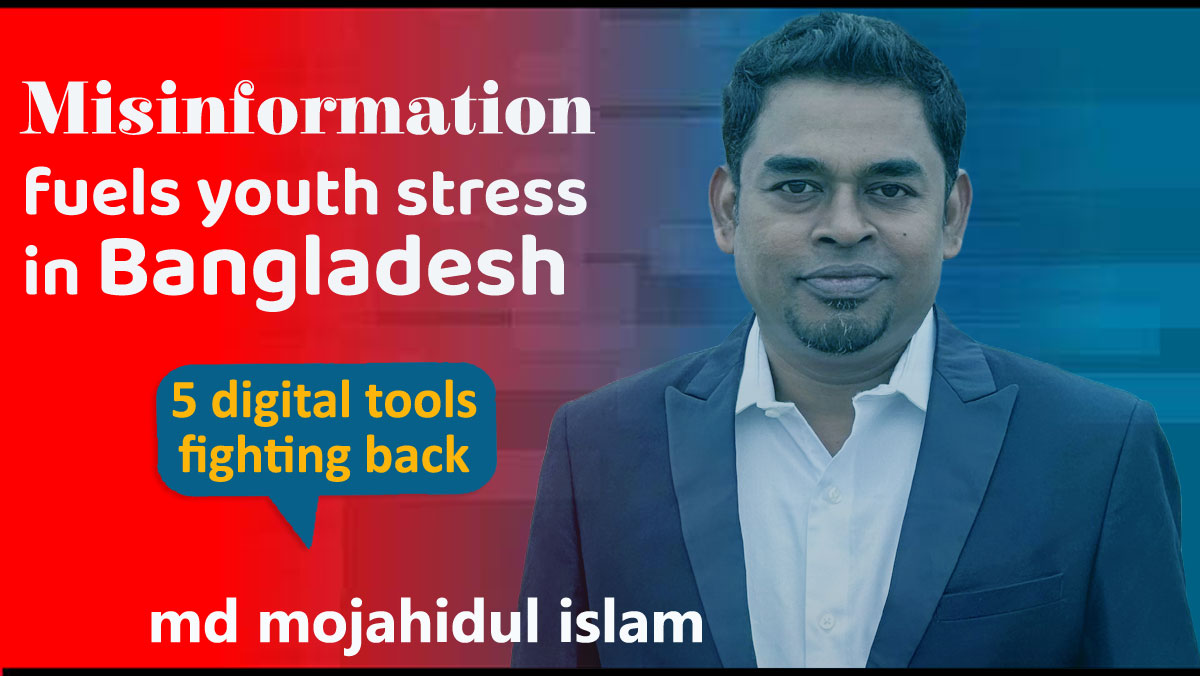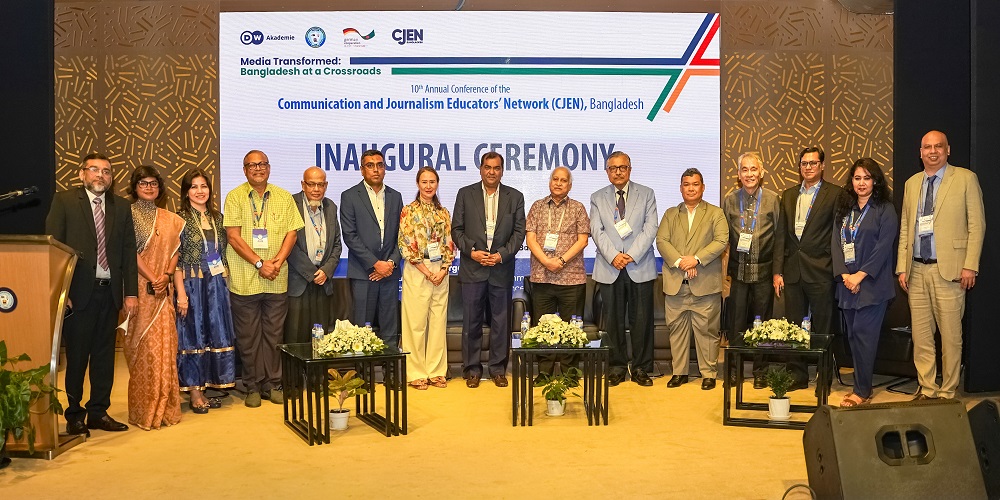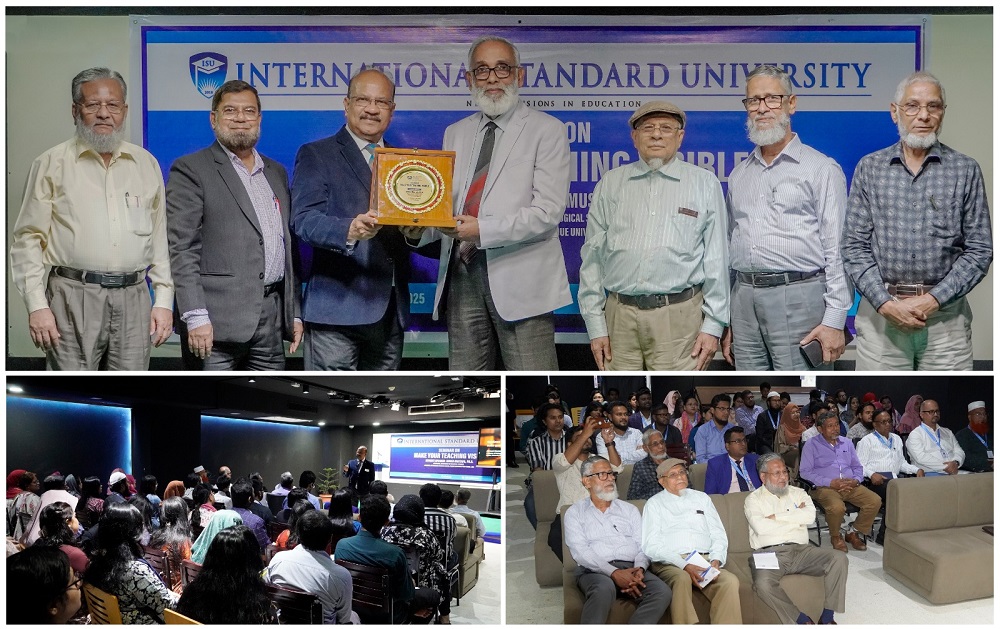
Misinformation fuels youth stress in Bangladesh: 5 digital tools fighting back
-

- - Newsroom -
- Editor --
- ২২ জুন, ২০২৫
Misinformation has become the leading cause of stress for young people in Bangladesh—beating out even cyberbullying and harmful content, according to a major UNICEF poll. Nearly 29,000 children and youth participated anonymously through the U-Report platform, revealing a sobering picture of how falsehoods online are chipping away at their mental well-being.
Two-thirds of respondents said fake news was their biggest source of anxiety on social media. Bullying and negative comments came in next, followed by distressing or graphic content. The poll also noted that girls experience slightly more harassment than boys.
But misinformation isn’t just mentally exhausting—it’s dangerous. A whopping 79% of those surveyed believe relaxing online rules would put vulnerable groups like ethnic minorities, women, and youth at greater risk. And while 23% worry that regulation might limit free speech, more than half—52%—support strict social media rules to stop hate speech and abuse.
“Falsehoods aren’t just floating around online; they’re shaping the real world and putting children at risk,” warned Rana Flowers, UNICEF Representative in Bangladesh. She called for urgent action to make the digital space safer, emphasizing the need for education, accountability, and cooperation between governments, platforms, parents, and youth.
More than half of respondents said their feeds have changed in recent months, with 17% saying they now feel less safe. That unease is backed by data from fact-checking group Rumour Scanner, which found a 58% surge in misinformation in 2024, with that trend continuing into 2025.
In just three months—February through April—Rumour Scanner detected 862 misinformation cases. The themes? National politics, religion, international affairs, and communal tension. April alone saw 16 instances of communal disinformation linked to Indian accounts, highlighting troubling cross-border influence.
Social media remains ground zero for fake news. Facebook alone accounted for 276 cases, with YouTube, Instagram, X/Twitter, and TikTok trailing behind. Even mainstream media wasn’t immune—15 instances were traced back to traditional outlets.
Among 296 cases from April, 138 were text-based, 105 were videos, and 53 involved manipulated images. Of these, 179 were entirely false, 66 misleading, and 48 distorted. High-profile targets included Nobel laureate Prof. Muhammad Yunus (subject of 29 false claims), legal expert Asif Nazrul, rights activist Syeda Rizwana Hasan, and political parties like BNP and Jamaat-e-Islami.
As Bangladesh heads into another election season, the misinformation storm is only expected to worsen. Experts are calling for collective action—from the state, civil society, and most importantly, informed citizens. Digital literacy programs, especially for the youth, are crucial in helping people recognize and resist the flood of fake content.
In the fight against misinformation, awareness is our frontline, education our armor, and responsible communication our sharpest weapon. The truth needs defenders—urgently.
5 Open-Source Tools Combating Misinformation
As misinformation spreads faster than a meme in a group chat, these five open-source tools are helping journalists, researchers, and everyday users fight back.
Capí – The Climate Chatbot
Created by Ambiental Media, Capí is an AI-powered chatbot built on Google’s Gemini model. It delivers science-based climate facts using data from the IPCC and other reputable sources, making it a handy ally for fact-checkers and eco-journalists alike.
Check-up – The Health Ad Watchdog
Developed by Aos Fatos in Brazil, this tool tracks deceptive health ads on top news sites. It uses AI and manual review to flag misinformation and is fully open-source for media houses to adopt or adapt.
Mosaico – Text-to-Video Wizard
Folha de S.Paulo’s Mosaico turns written news into engaging short videos—perfect for reaching the scrolling generation. It’s powered by Python, built for journalistic standards, and allows editorial review to ensure accuracy.
Quem Disse? – Authorship Transparency Plugin
Folha do Mate’s WordPress plugin helps readers see who’s behind the story, providing journalist bios and source details. It brings credibility to local journalism and helps bridge the trust gap.
Xarta – Always Up-to-Date Context
From Núcleo Jornalismo, Xarta embeds “context cards” into news articles to provide the latest background on ongoing topics. These cards are shareable under Creative Commons and can be customized by any newsroom.
Together, these tools show that open-source tech, transparency, and teamwork can strike a powerful blow against misinformation. Truth warriors, your toolkit awaits.
The writer is a technology journalist and former president of the Bangladesh ICT Journalists Forum. He can be reached at: mojahidul.islam@gmail.com


.jpeg)
_(1)_(1)_(1)4.jpg)



.png)

